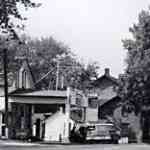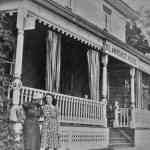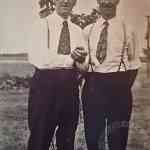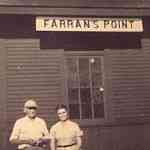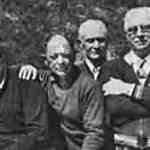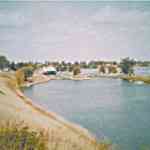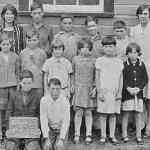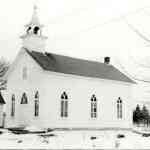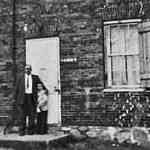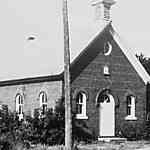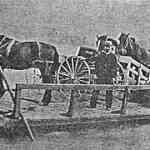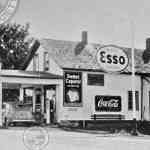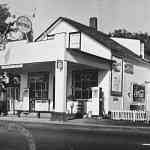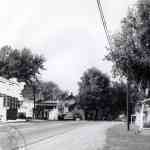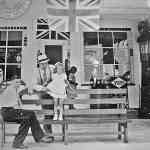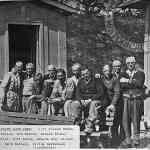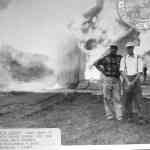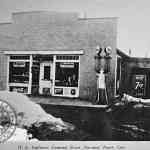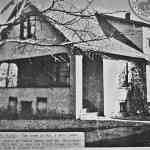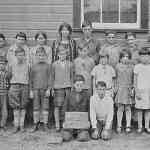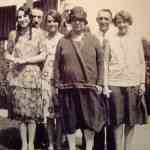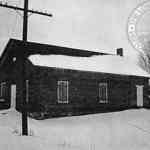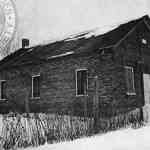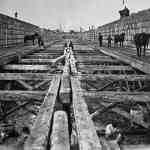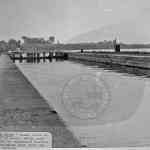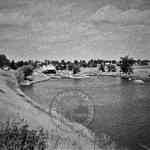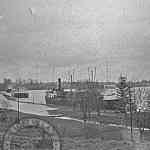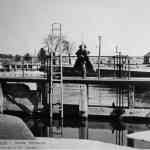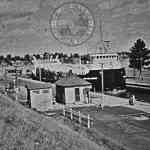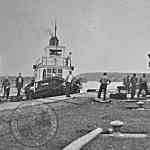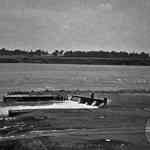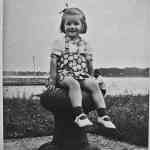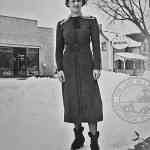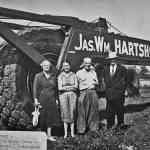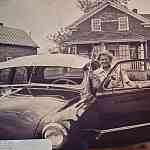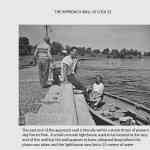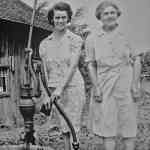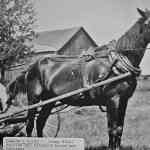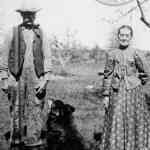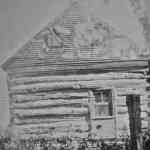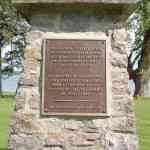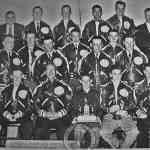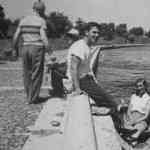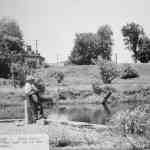Farran's Point
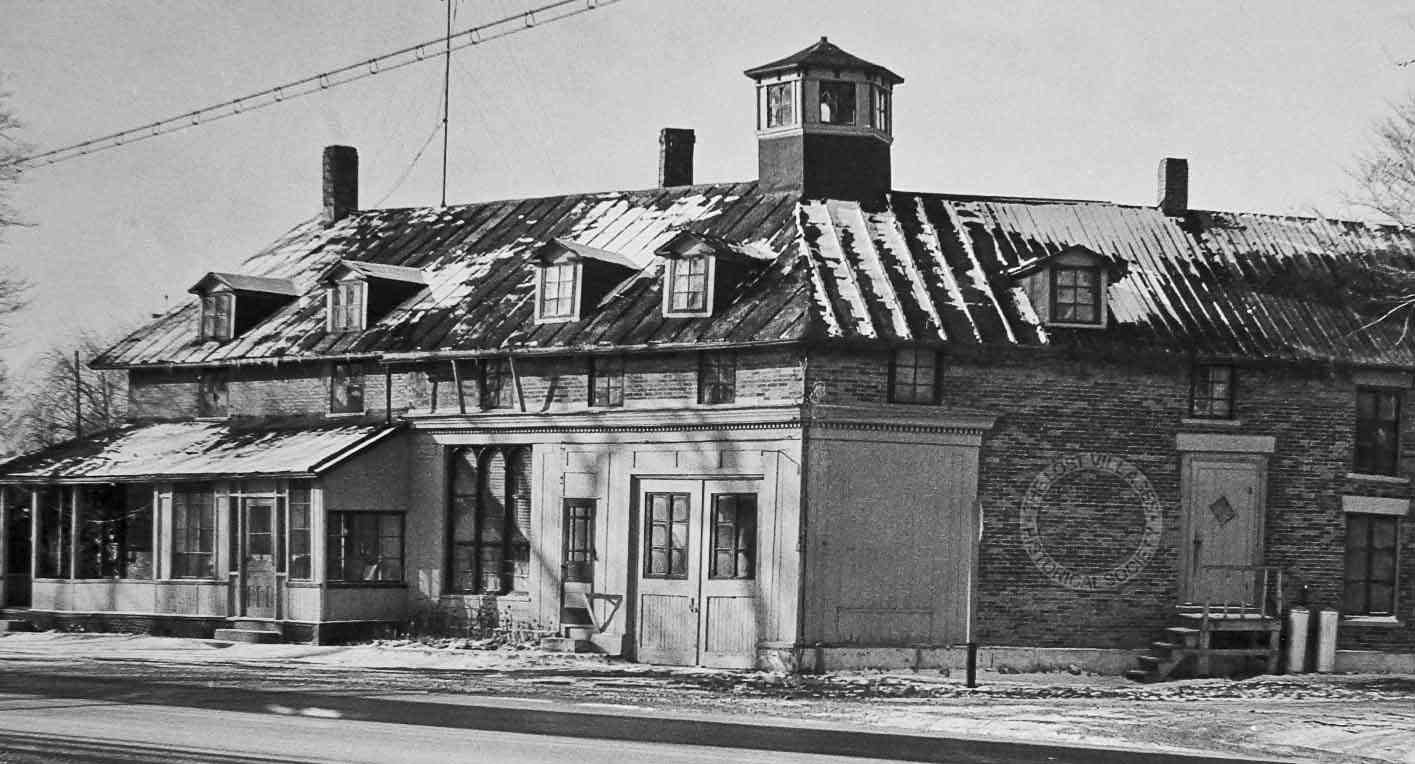
Research indicates that it was Charles Curtis Farran Sr., an immigrant to Upper Canada from Dublin, Ireland, in the 1790s, whose name is associated with the naming of the village of Farran’s Point. In 1808, he married Catherine Baker, daughter of Adam Baker Sr U.E.L. He operated an inn in the vicinity of the canal that was eventually constructed along the St. Lawrence at Farran’s Point in 1847. An Order in Council granted Catherine the property at Farran’s Point on January 26, 1808 as the daughter of a Loyalist.
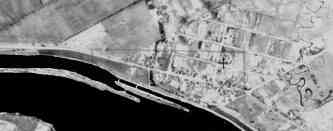
It was Charles Curtis Farran, affectionately known as C.C., and later on the Kerr brothers, George and Joseph, who were responsible for the village’s early growth. C.C. Farran owned several mills that included a grist mill, located at the lock, a carding mill, sawmill, and shingle mill. He also owned a general store, as well as a large tract of land north of the village and west of where the Grand Trunk Railway Station was eventually built. Farran built a power station near the rapids on the St. Lawrence in front of the village.
Joseph Kerr, a newcomer from Ireland, was also a mill owner who went on to become very prosperous. Joseph, along with his brothers, George, Thomas and William, owned two sawmills, a grits mill, farms and a large general store with branches a Wales and Aultsville. All the brothers were active in politics. Joseph Kerr served the community as Reeve and both Joseph and George were active at the provincial level. The huge Kerr home, built on a corner lot that included a store on the east side, was often referred to as Buckingham palace.
The success of the Farran and Kerr operations attracted a number of other businesses to the area and by the mid 1800s the little community boasted a population of around 300. The mills were located along the shoreline at the south end of the village. The business district was situated further north with most of the businesses located either on Mill Street, which ran north from the Farran Mills, or on the north side of the highway, Known locally as Main Street. The community was bounded on each side by property owned by the Kerr brothers.
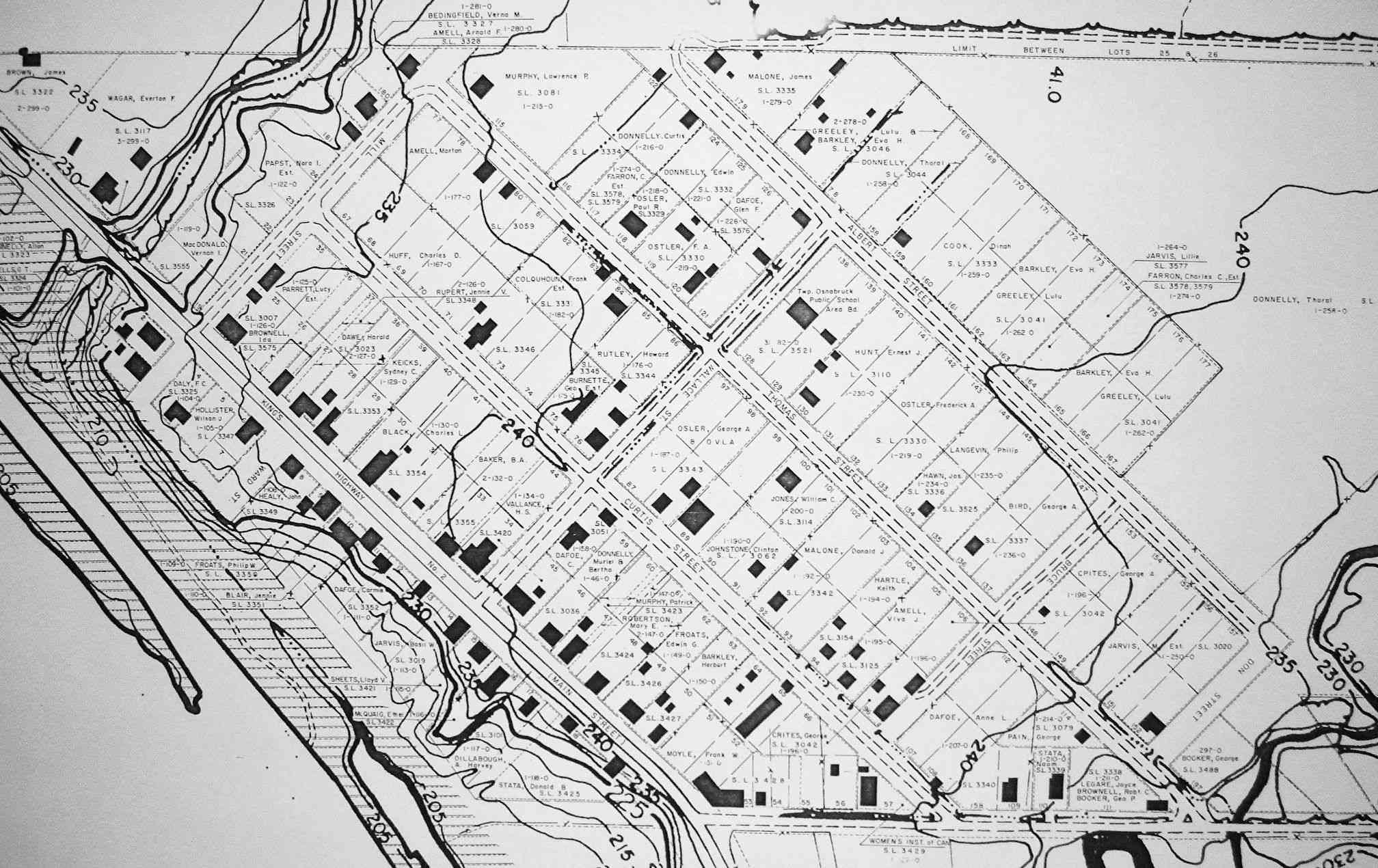
By the late nineteenth century, the village boasted two hotels, the Baker Stage Coach Inn and a Second hotel run by Edward Denney. There was also a combination bakeshop and confectionery, owned by the Elliotts, a millinery shop and a couple of taverns. Both the Statas and the Gogo brothers, who were also shoemakers, owned general stores. Typical of many small rural towns, the village included an assortment of trades people such as wheelwright Isiah Dafoe, carpenter Robert Sheets, and the Duvall Who operated blacksmith and tinsmith shops. There was a livery stable and a marble works, operated by the Stubbs Brothers.
In addition to the school and homes for the mill workers, Farran’s Point had two churches. A Roman Catholic Church, St Francis of Assisi, was located just east of the village. St. Francis shared a priest with the neighbouring communities of Mille Roches and Dickinson’s Landing. There was also a Presbyterian church, St. John’s, established in 1880 with a donation from C.C. Farran. The railway station and stationmaster’s dwelling were located northeast of the village, adjacent to the Kerr lands.
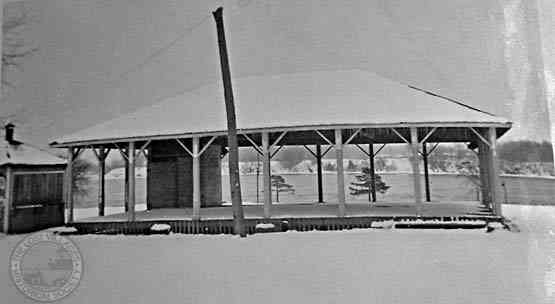 In later years, the most popular place in town was the open-air pavilion, located in Farran’s Park, on the hill above the lock and canal. There was a dance floor with roof, live entertainment as well as a nickelodeon in the southeast corner provided the hits of the day, with the drop of a coin. There was also a family park near Lock 22. When the village of Farran’s Point was flooded, the pavilion was moved to the Stormont Agricultural Society’s Fairground at Newington, Ontario. The Farran’s Park Pavilion was provided to the community by the Women’s Institute.
In later years, the most popular place in town was the open-air pavilion, located in Farran’s Park, on the hill above the lock and canal. There was a dance floor with roof, live entertainment as well as a nickelodeon in the southeast corner provided the hits of the day, with the drop of a coin. There was also a family park near Lock 22. When the village of Farran’s Point was flooded, the pavilion was moved to the Stormont Agricultural Society’s Fairground at Newington, Ontario. The Farran’s Park Pavilion was provided to the community by the Women’s Institute.
At the time of inundation, all that was left were the two churches and a couple of stores. Today the remains of Farran’s Point lie beneath shallow waters and portions of the old sidewalks can still be followed during the fall and winter when the water levels are low. After almost fifty years of protecting these scant remains from the relentless actions of the waves, Highway 2 has been reduced to just a thin sliver of its original self as the waves have slowly removed the many accumulated layers of asphalt. 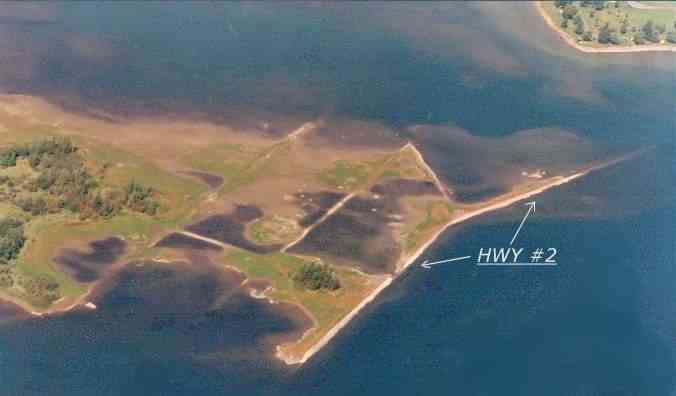
While the original community no longer exists, the name lives on in Farran Park, a riverfront campground at Ingleside, Ontario, owned and operated by the St. Lawrence Parks Commission.
THE LOYALIST SETTLERS OF FARRAN’S POINT
Peter Everitt was born in America and enlisted in the First Battalion of the King’s Royal Regiment of New York on October 28, 1776. He achieved the rank of Second Senior Lieutenant. He was a Volunteer in the Colonel’s Company, Sir John Johnson, in 1776, and promoted to Ensign in the Major’s Company, Major James Gray, on August 24, 1777. He was promoted to Lieutenant on November 14, 1781, and was Lieutenant of the Grenadiers from 1781 to 1783. Peter Everitt was a farmer in New York state.
John Adam Baker (b. 1740 Schoharie, New York, USA) and his son, John, are recorded as having enlisted with Sir John Johnson’s Company of the King’s Royal Regiment of New York. He received his discharge from the Regiment in Montreal Dec. 23, 1783. He was then entitled as was his son by His Majesty’s last order of his Provincial Corps to become a settler in the province.
His son, John, married and had five children. They were all entitled to land grants as they became of age and all settled near their father’s property at Santa Cruz/Woodlands (a small settlement in Osnabruck Township, Stormont County, Ont. about 15 miles west of Cornwall on the St. Lawrence River. It no longer exists). Here John built a Georgian style house with seven chimneys that was torn down during the building of the St. Lawrence Seaway. John became a ship’s chandler supplying the needs of travellers both on land and on water. From Montreal to Kingston, his house became known as “Baker’s”.
Adam was the father of Catherine Baker who married C.C. Farran, petitioned and was granted land at Farran’s Point (1808) as the daughter of a Loyalist.
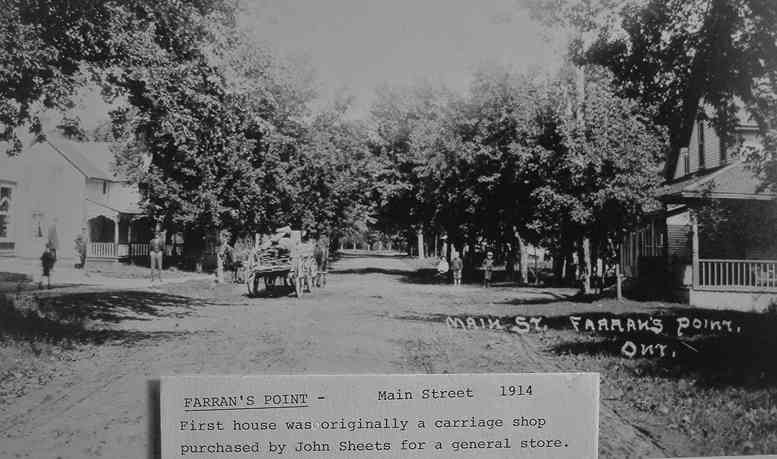
STREET NAMES
-
Highway #2 or Main Street
- Albert Street
- Bruce Street
- Curtis Street
- Don Street
- Mallace Street
- Mill Street
- Thomas Street
BUSINESSES, SCHOOLS & CHURCHES
Not Pictures: Neil Rose General Store & Moyles Grocery Store
The following list of unknown date, probably appeared in a local paper.
-
Jeremiah Bligh, Lumber Dealer
-
George M. Baker, Storekeeper and Harnessmaker
-
Canadian Express Co.
-
William Cline, Sawyer
- Isaiah Dafoe, Carriagemaker
- Edward Dennay, Hotelkeeper
- Edward Duffy, Clerk
- E Duvall, Blacksmith
- David Elliot, Baker and Shoemaker
- Chs C. Farran, Miller and Land Owner
- John R. Farran, Postmaster
- George Ferris, Lumberer
- William Gibson, Storekeeper
- Joseph Gogo, Shoemaker
- George T. Gorrell, Storekeeper and Agent for Montreal Telegraph Co.
- Kerr Brothers, General Storekeepers
- William Hiscock, Storekeepr
- John McDonald, Tailor
- James McEwan, Blacksmith
- James McTiernan, Shoemaker
- G.T. Gorrell, Montreal Telegraph Co. Agent
- James Roddy, Storekeeper
- George Selkirk, Cabinetmaker
- Robert Sheets, Joiner
The Advance-News, Ogdensburg, NY – August 26, 1933
History of the Croils Set Forth
Paper by Canadian Writer Tells of Early Settlers on St. Lawrence Island
Sarah C. Eamon, convener of historical research of Stormont County, Ontario, has prepared a very interesting paper regarding the settling of Croil’s Island. This island is in the town of Louisville, just above Long Sault Island. The paper giving the colourful history of the Croil family follows:
Of the Scottish settlers that came to the township of Osnabruck, none take precedence over the family of Croil, whose name has been preserve for prosperity by the island lying opposite the village of Farran’s Point, in the St. Lawrence River. This island was at first known as Stacey Island, but after William Croil’s residence upon it, it received the name of Croil’s Island.
There were four Croil brothers – Thomas, William, James and John, all of whom answered the lure of the new world and settled in Canada. These brothers were born at Glasgow and their father was a West Indian merchant who amassed a considerable fortune. Their mother was the daughter of William Richardson, a manufacturing merchant in Glasgow.
The eldest son, Thomas Croil, went to represent his father’s firm in Barbados, West Indies. Later he came to Croil’s Island, and acquired a small farm, where he lived until his death in 1851, at the age of 41, and was buried in the old “God’s Acre” at Woodland.
William Croil came to Canada in 1835 and bought Stacey Island where he lived for 20 years surrounded by a devoted Scottish tenantry, who had followed him to Canada. In 1837, he married Caroline, daughter of Matthew Richardson, of Halifax. His home farm on the island consisted of 400 acres, with the rest of the land being occupied by half a dozen tenant farmers at $2 per acre, payable in farm products as there was no cash in circulation. He called his homestead “Kelvin Grove.” The home was pleasantly situated on rising ground in full view of the river, which is very rapid and deep at this point.
Across from it on the Canadian shores, stood the home of “Old Charlie Farran”, one of the original United empire Loyalists and the great mogul of the county, at that time.
Later in 1841, James Croil came to the island and lived with William. William was a splendid horseman and an excellent sailor. He could build a boat and make his own sails. In all these arts he found his brother, James, and apt pupil.
The winters were spent in the woods, providing fuel and fence rails, and in drawing sawlogs to the mill when the ice “took”. In the long winter evening the brothers played the flute and fiddle in concert, crocheted, patched their mittens and moccasins, said prayers, banked the fire and went early to bed. The great event of the winter was the sugar making for which they made their sap troughs, cut from ash.
In June, 1847, James married a Miss Richardson, of Halifax, a sister of William’s wife. Previous to his marriage, in 1845, he bought Crysler’s Farm from the Hon. Peter McGill and Joseph Shutter, of Montreal, who held a mortgage on it. The price paid for the farm was $6,000. James Croil was very proud of his historic farm of 500 acres, though the mansion house was in need of repairs as well as the farm buildings and fences. He called his homestead “Archerfield” and later built a fine new mansion. The furniture for his home was made by his own clever hands, a particularly fine piece of handicraft being a book case, which took him four months to make.
John Croil, the youngest brother bought a farm west of Aultsville. On the river bank he built his home, “Sunnyside,” now owned by rev. Mr. Sinclair. Here he set out a fine orchard, and was a popular lecturer on agricultural and horticultural subjects.
He was twice married, his second wife being a Miss Robertson of Maple Grove, a first cousin of the late Carleton Robertson.
William Croil left the island after 20 years’ residence and went to Hochelaga, near Montreal where he made a pleasant home for his family on the banks of the St. Lawrence and where he indulged in his favourite pastimes of horsemanship and boating. He died in 1873 [in Nassau, Bahamas] and was buried in Mount Royal cemetery.
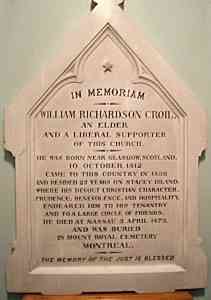 In St. Matthew’s church, Woodlands, of which William Croil was an elder, there are today two precious mementos of his stewardship in that church. One is a tablet erected by his Scottish tenants on the occasion of William Croil’s departure to live in Hochelaga. These faithful friends, to show their love and respect for William Croil, erected the tablet in his memory, at a cost of $100, a very great sum in those money scarce days. Near the pulpit of St. Matthew’s is a chair made by Mr. Croil. Both
In St. Matthew’s church, Woodlands, of which William Croil was an elder, there are today two precious mementos of his stewardship in that church. One is a tablet erected by his Scottish tenants on the occasion of William Croil’s departure to live in Hochelaga. These faithful friends, to show their love and respect for William Croil, erected the tablet in his memory, at a cost of $100, a very great sum in those money scarce days. Near the pulpit of St. Matthew’s is a chair made by Mr. Croil. Both 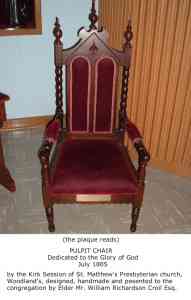 tablet and chair are still in St. Matthew’s, a precious link with past days and a lasting tribute to the memory of a good and honourable gentleman.
tablet and chair are still in St. Matthew’s, a precious link with past days and a lasting tribute to the memory of a good and honourable gentleman.
The Croil brothers were all well educated and each would have done better in some other line of work, but each chose farming.
William should have been a minister or engineer, and each of the others would have made capable business men had they not fallen in love with farming.
Both William and James were elders in the Presbyterian church at Woodlands. William was ordained an elder in 1841 and James in 1850, along with Richard Loucks, of Aultsville. These two were ordained elders by Rev. Isaac Purkis.
A word may be said about the old wooden church of Osnabruck. It was of the barn order, with walls innocent of paint. It had been built in 1795 by the joint efforts of Lutherans and Presbyterians. In 1857, it was fell to the Presbyterians, who removed the old building to Pleasant Valley and erected a brick edifice, the present St. Matthew’s. The first two ministers were Lutherans and the services were conducted in the German language.
When James Croil joined the church in 1841, the men and women sat apart on either side of the church. The congregation consisted chiefly of Islanders, who always went to church rain or shine, ice or no ice in the river. While living at Archerfield, James Croil frequently attended the Williamsburg Episcopal church, the nearest Presbyterian church being that of Osnabruck nine miles distant.
On one occasion an infant was to be baptized and when the sponsors were asked to name the child, the name given was “Selah”. In vain the minister explained the “Selah” was not a proper name. The child was christened Selah. Was it a boy or girl? Nobody could tell.
James Croil left Archerfield to reside in Montreal. Needless to remark, he took his bookcase with him.
Mr. Croil became an elder in St. Paul’s church and was very influential in Presbyterian circles, editing the “Presbyterian” and later “Record” of the Presbyterian church in Canada. He was also the author of numerous books, one very interesting and valuable one being “Dundas” or “A Sketch of Canadian History”. This book and Judge Pringle’s book, “Lunenburg, or the Old Eastern District,” should be in the libraries of every school in Ontario.
James Croil lived to the patriarchal age of 94, dying in 1916.
Some information on this page is courtesy of the Ghost Town Pix website by Jeri Danyleyko. For more great historical information on this village and many others across Canada, be sure to check out http://www.ghosttownpix.com/lostvillages/farrans.html.
MORE FACES & PLACES

